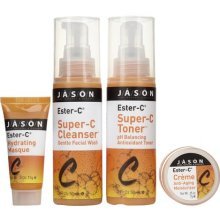Hey there now Love Bugs!!!
(^_^)
MAN…
it has been soooooooo long since I have actually written in this blog. I know
some of you have totally lost interest !!! LOL. I do not blame you either. BUT…
I think I have some really awesome information that I can share now!!! (^_^)
And that is always good!!!
SO…
in the multiple weeks that I have been
missing in action, I have been really
taking this new hair care regiment to a whole new level!!! Since the second
week of June up until now, I have been co- washing my hair at a minimum of
twice a week. And I always completely wet my hair every time I take a shower or
a bath. Mind you, I have not set my hair in curlformers for some time now. So,
most of the hair styles that I have been wearing as of late have not even
required additional tools outside of
goody hair bands, a wide tooth comb, a soft bristle brush and silk hair
scarf. I still have not applied any form
of heat to my hair ( including a well positioned blow dryer ) since March and I
am proud to say that I believe my hair has really appreciated it!!!
I
mentioned co-washing hair during the summer. Well, the reason I said that is
because I believe it is important to know that your hair naturally goes through
periods in which growth time is diminished or enhanced based on the time of
year. Sometimes we believe that our hair is actually falling out , when in fact
that may not be the case. During the summer, we shed a certain amount of hair.
Just like animals do. Funny huh??? Well, not really when you look at it from
this perspective. During the winter, our hair grows. Sort of like how the fur
of any animal thickens in order to prepare for living in colder temperatures
during the season change. We too have the same thing working for us during the
winter that the bears rabbits and other outdoor animals have. So naturally we
shed hair in the summer , and grow our hair noticeably thicker during the
winter.
With
that being said, it is important to know what to look for to determine whether
you are shedding hair, or your hair is actually falling out. The hair that is
supposed to be shed comes from the scalp and does not break off at shorter
lengths typically. The shed hair has a white bulb at the end of it. If you see
that, then rest assured the hair that has “fallen” out of your head was
actually naturally shed. It was time for that hair to depart. (^_^) But, if you
find that really short pieces of hair are breaking off, then this may be a
result of not having enough moisture to bring elasticity to your hair. This imbalance can be corrected by using water
based hair products to restore moisture to your dry mane. If your hair is way
too elastic or mushy feeling it could mean that you do not have enough protein
in your hair.
You
can always do a wet assessment on your hair to determine whether your hair is
balanced, and if it is not… based on the results of the test you can correct
the issue. I found a remarkable site called The Science of Black Hair (www.blackhairscience.com) and it
gives very good instructions on how to determine the state your hair is in. Usually
in order to perform a wet assessment, it is best to take a shower and evaluate
your hair when your entire head has been rinsed in water. I will list the
information pertaining to the wet assessment below:
If your hair:
- (When Wet or Dry) Stretches slightly and returns to its original length without breaking, you are balanced! Stick with maintaining!
- (When Wet or Dry) Stretches a little more than normal then breaks, you need more protein in your regimen.
- (When Wet or Dry)Stretches, stretches, stretches with no significant breakage yet, add a bit more protein to your regimen.
- (Wet)- Feels weak, gummy, mushy, or limp, you need to add more protein to your regimen.
- (Wet or Dry) Experiences very little to no stretching, and simply snaps or breaks, you need to increase the moisture in your regimen.
- (Dry) Feels rough, tough, hard, dry, tangly, brittle, or any combination of those, you need more moisture in your regimen.
- Unsure? Err on the side of caution and give your hair more moisture. So now that you have figured out what type of hair breakage you have, what should you do?





















